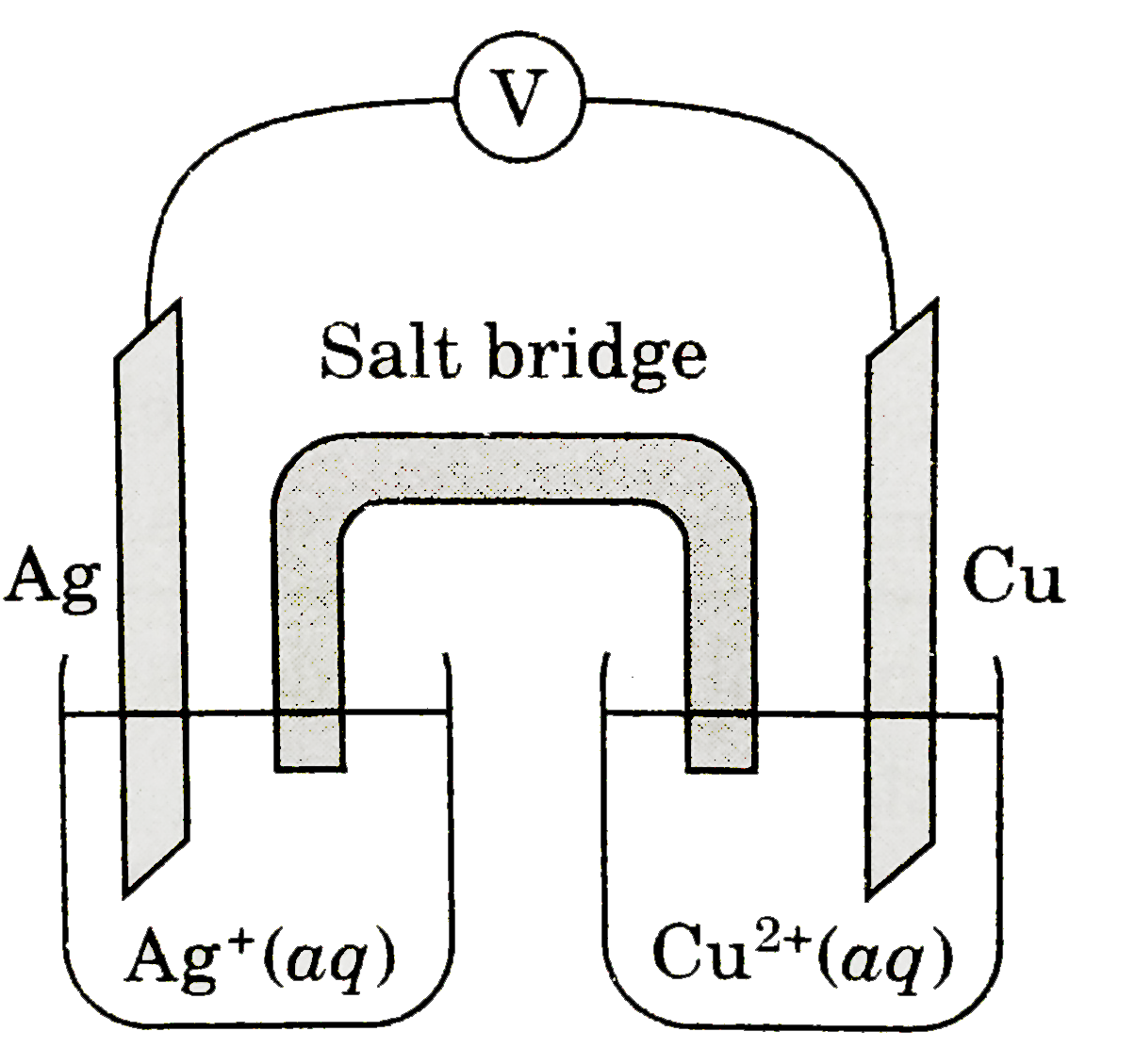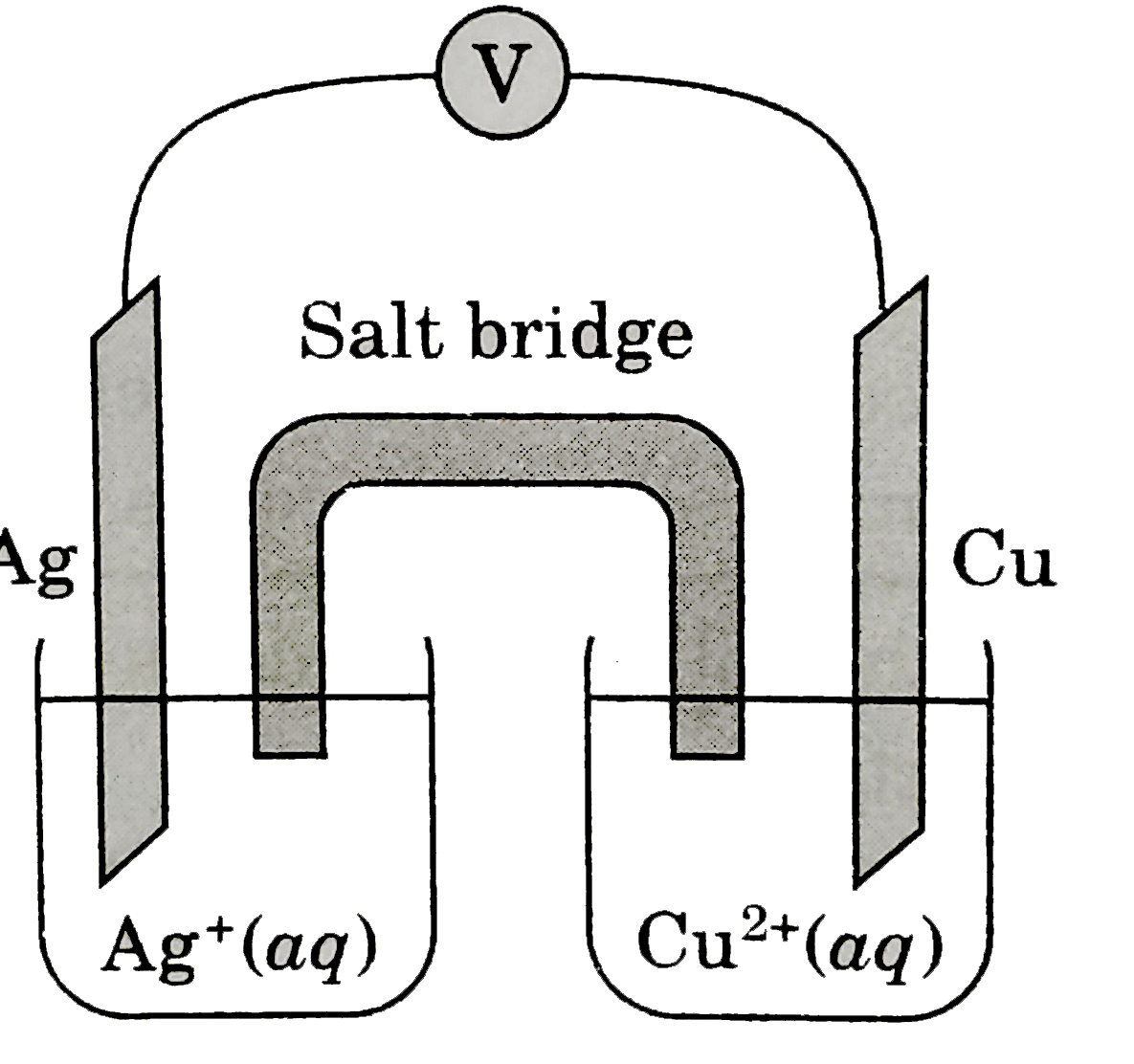Knowing that :
Cu2+(aq)+2e−→Cu(s), E∘=+0.34 V
2Ag+(aq)+2−→2Ag(s), E∘=+0.80 V
reason out whether, 1M silver nitrate solution can be stored in copper vessel or 1M copper sulphate solution in silver vessel.
Video Solution
Text Solution
A solution of an elecreolyte can be stored in a particular vessel only in case there is no chemical reaction tking place with the matierial of the vessel .
Now if silver nitrate solution is to be kept in copper vessel the probabl,e reaction will be:
Cu(s)+2Ag+(aq)+2Ag(s)
Since copper is placed below silver in the activity series, this means that it can lose elctrons to Ag+ ions and the chemical reaction will occur .Therefore, silver nitrate oslution cannot be kpt in copper vessel .Now when copper suphate can be easily stroed in silver vessel.
|
Topper's Solved these Questions
- REDOX REACTIONSBook:DINESH PUBLICATIONChapter:REDOX REACTIONSExercise:H.O.T.S Conceptual Question
Explore 5 Videos
- REDOX REACTIONSBook:DINESH PUBLICATIONChapter:REDOX REACTIONSExercise:Value Based Question
Explore 2 Videos
- REDOX REACTIONSBook:DINESH PUBLICATIONChapter:REDOX REACTIONSExercise:Long Answer Type Questions
Explore 6 Videos
- RATES OF REACTIONS AND CHEMICAL KINETICSBook:DINESH PUBLICATIONChapter:RATES OF REACTIONS AND CHEMICAL KINETICSExercise:Ultimate Preparatory Package
Explore 29 Videos
- S-BLOCK ELEMENTS (ALKALI AND ALKALINE EARTH METALS )Book:DINESH PUBLICATIONChapter:S-BLOCK ELEMENTS (ALKALI AND ALKALINE EARTH METALS )Exercise:Assertion reason
Explore 12 Videos
Similar Questions
Knowledge Check
Using the standard potential values given below, decide which of the statements P,Q,R,S are correct?
Choose the right answer from (a), (b), (c ) and (d).
Fe2++2e−→Fe, E∘=−0.44V
Cu2++2e−→Cu, E∘=+0.34V
Ag++e−→Ag, E∘=+0.80V
(P) Copper can displace iron from FeSO4 solution
(Q) Iron can displace copper from CuSO4 solution
(S) Iron can displace silver from AgNO3 solutionAP and QBQ and RCQ and SDP and SAg+(aq)+e−→Ag(s)E∘=0.80V
Cu2+(aq)+2e−→Cu(s)E∘=0.34V

Which increases immediately if the surface area of the silver electrode is increased?AOverall cell voltageBRate of change of [Ag+]CMass of Cu electrodeDChange in ratio of electrode masses Δ(Mass of CuMass of Ag)Cu2+(aq)+e→Cu+(aq),E∘=+0.15v
Cu+(aq)+e→Cu(s),E∘=+0.50v
The value of E∘Cu2+/Cu will beA0 . 150 vB0 . 50 vC0 . 325 vD0 . 650 v
Ag+(aq)+e−→Ag(s)E∘=0.80V
Cu2+(aq)+2e−→Cu(s)E∘=0.34V

What is the value for ΔG∘ when [Ag+]=[Cu+]=1.0M?
View SolutionThe electrode potentials for Cu2+(aq)+e−→Cu+ (aq) and Cu+(aq)+e−→Cu(s) are +0.15V and +0.50V respectively.
The value of E∘Cu2+/Cu will be:
View SolutionThe electrode pptenticals for
Cu2+(aq)+e−→Cu+(aq)
and Cu+(aq)+e−→Cu(s)
are +0.15V and +0.50V repectively. The value of E∘cu2+/Cu will be.
View SolutionAg+(aq)+e−→Ag(s)E∘=0.80V
Cu2+(aq)+2e−→Cu(s)E∘=0.34V

Which expression gives the voltage for this cell if [Cu2+]=1.00M and [Ag+]=0.010M?
View SolutionIn the cell reaction
Cu(S)+2Ag+(aq)→Cu2+(aq)+2Ag(s),E∘cell=0.46 V
By doubling the concentration of Cu2+,E∘cell is
View Solution
